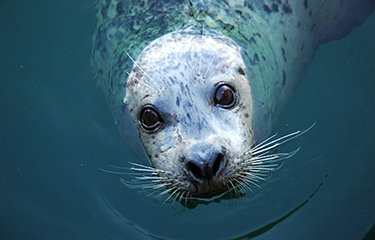Dealing with hungry, predatory seals has become a big deal for inshore fishermen, fish farmers, and authorities responsible for safe passage for migratory salmon.
Losses caused through broken nets and half-eaten fish have risen sharply in the past few decades as protected seal populations have expanded globally.
From 2022, the U.S. Marine Mammal Protection Act will restrict imports of fish from salmon farms and commercial fisheries originating from countries that kill or injure marine mammals. The rule has potentially serious consequences for exports of salmon from Norway, Scotland, and Chile – and also for commercial fishing industries. Exports of salmon from Scotland to the U.S. were worth GBP 179 million (USD 246 million, EUR 208 million) in 2019, but that trade could be curtailed as a result of the legislation taking effect.
In an effort to increase compliance, the Scottish Parliament repealed a provision to grant licences for the shooting of seals on the grounds of protecting fisheries and fish farms over a year ago, introduced tougher controls on the use of acoustic deterrent devices (ADDs) to scare them off, and increased penalties for illegal killing of seals. Courts can now jail offenders for up to five years and impose unlimited fines.
Other countries are likely to follow suit, spurred to action as a result of ongoing pressure from consumers, retailers, and activists.
Edinburgh, Scotland-based GenusWave, with its Acoustic Startle Technology (TAST) FisherySafe product, claims to have a solution to seal predation. According to the company, FisherySafe actively prevents seals from entering fishing nets Research carried out for the company, shows that TAST can reduce seal presence under fishing boats by over 95 percent. It also provides knock-on benefits of reducing the stress caused to the fish through the presence of seals.
“Less stress to the fish results in lower cortisol levels and increased mucus production, which in turn lowers the ability of sealice to attach to the salmon. The overall result is healthier, higher quality fish, and happier fish farmers,” Alevy said.
“The GenusWave TAST works on a different principle from ADDs. It sends out brief, isolated sound pulses that startle the seals and triggers their flight response, a bit like a dog whistle in reverse. Seals don’t habituate to TAST, but it conditions the animals to avoid the area, giving fisherman a long-term solution to their problem,” GenusWave Managing Partner Steven Alevy told SeafoodSource.
The technology, which was developed by researchers Thomas Götz and Vincent M. Janik at the Sea Mammal Research Unit at Scotland's University of St. Andrews, has so far been implemented both in Scotland and in Alaska, where fishermen were dealing with frequent interference by Steller sea lions.
“At one trial in Scotland, the fishermen were so delighted with the results that they didn’t want to give back the devices, which are used over the side of the vessel. Seals had been following them from the harbor and seriously depleting the catch, but with TAST switched on, they were able to safely land the whole lot,” Alevy said.
SalmonSafe is now being rolled out in Norway. It is the only acoustic device to be approved by the Aquaculture Stewardship Council (ASC), following extensive review and investigation, Alevy said.
Used in conjunction with GenusWave’s Sea Lice Defence Technology (SLDT), which disrupts the ability of sea lice to identify and attach to a host, therefore reduceing their ability to infect salmon and complete their life cycle, Alevy said the company provides significant protection for farmed salmon.
Alevy said there are myriad benefits to reducing stress felt by farmed fish, and that the links are only just beginning to be understood.
A recent research paper by Delfosse & Pageat, 2021, directly links plasma cortisol levels to sea lice infestation levels and suggests that: “current lice management strategies may, paradoxically, increase reinfestation risk by handling or otherwise stressing the salmon.”
“Predators are just one stressor for salmon, with others including sealice treatments and general husbandry,” Alevy said. “If our technology can help with one of these, then we have an important part to play in the development of the salmon-farming industry.”
Photo courtesy of Pat Stornebrink/Shutterstock







